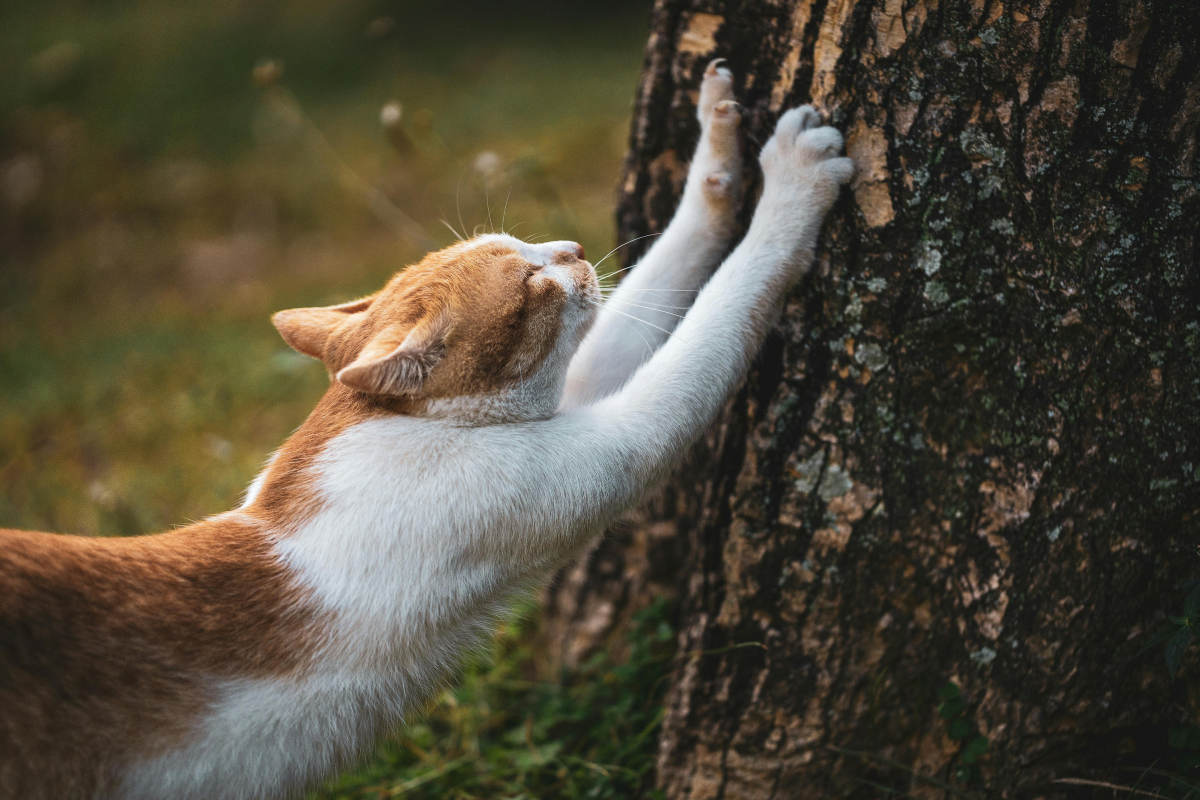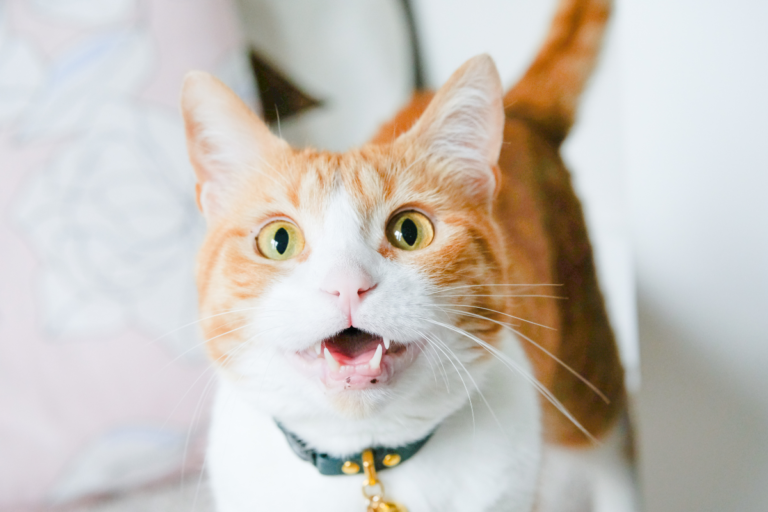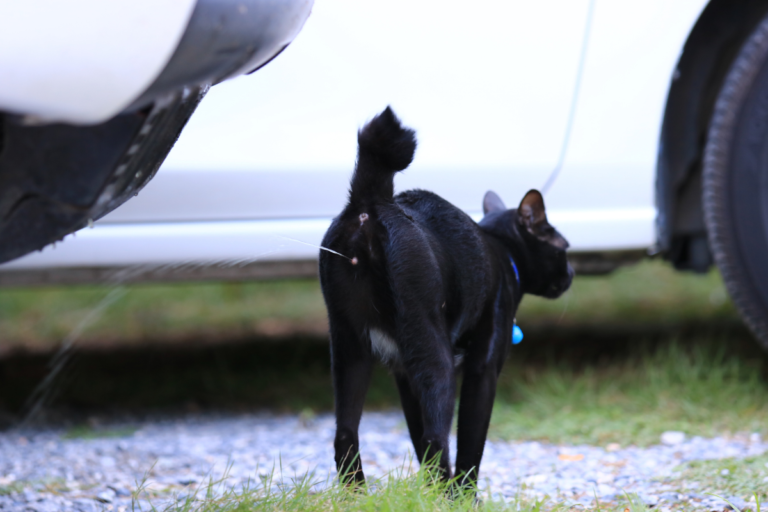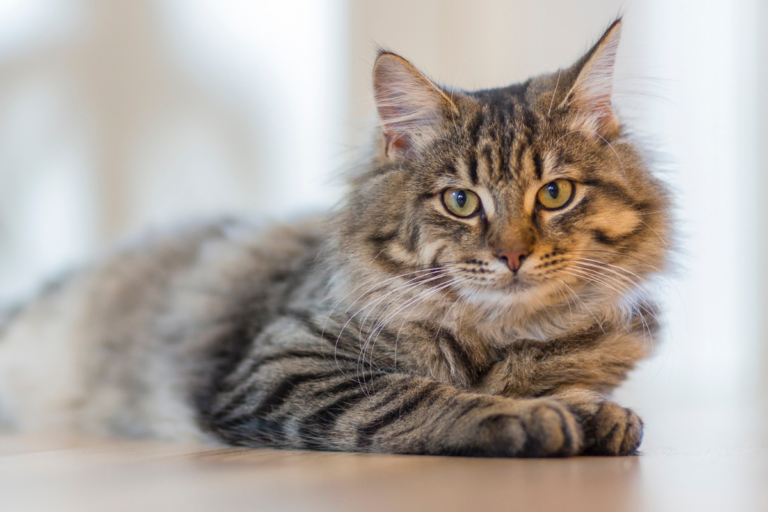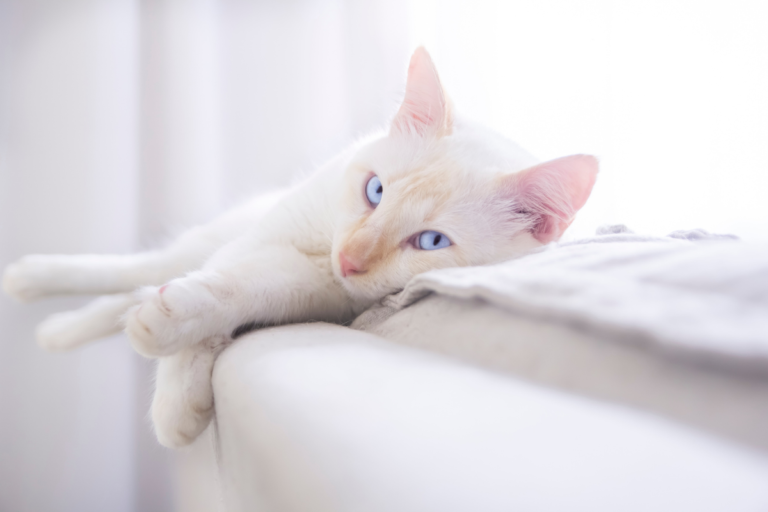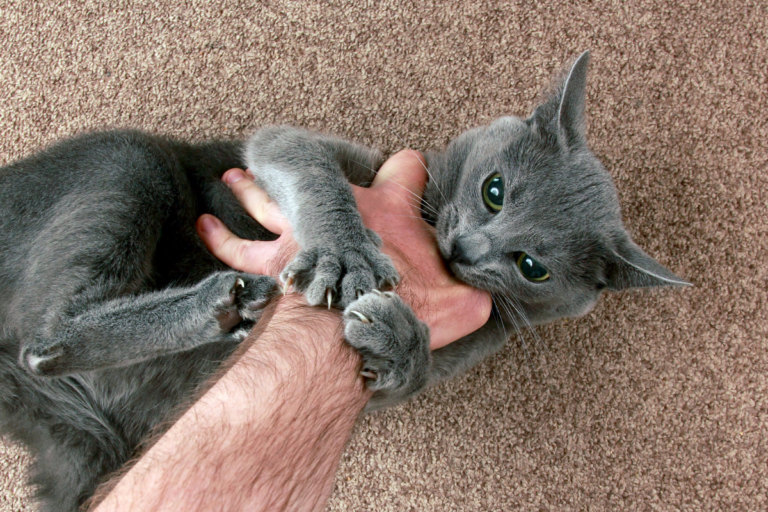My Feline Dilemma: Considering Declawing Cats
Understanding Cat Behavior
Cat Scratching Behavior
I gotta tell you, cats really get a kick out of scratching stuff. If you’ve ever owned a cat, you’ve probably seen it firsthand. It’s as natural as a dog wagging its tail or us grabbing a cup of coffee in the morning. But there’s more to it than just tearing up your favorite chair. Turns out, scratching is a key part of cat life. It’s their version of a gym session—stretching those long feline muscles, keeping their claws in tip-top shape, and leaving their “I was here” mark. Susan Krebsbach, a vet with a soft spot for cats, says that when cats go to town on their scratching posts, they’re actually stretching, shedding the outer nail cover, and marking their turf (The Humane Society of the United States).
| Purpose of Scratching | Description |
|---|---|
| Muscle Stretching | Gets the blood flowing and keeps those sleek bodies limber. |
| Shedding Outer Nail Sheath | Regular claw care, keeping nails sharp and healthy. |
| Marking Territory | A personal billboard—”Fido, this is my spot.” |
But it ain’t just about the physical stuff. Scratching also keeps their minds sharp. Think of it like a predator’s workout—it’s part of their hunting plan in the wild. Imagine your cat channeling its inner tiger!
The Significance of Scratching
Scratching is a cat’s way of telling you, “I’m living my best life!” That’s why having a scratching post is like giving them a little piece of kitty paradise. Not only do these posts satisfy their natural urges, but they also mean your couch won’t become their next masterpiece.
To keep your cat from redecorating your furniture with scratches, it’s all about setting them up for success. So, what’s the secret sauce? Give them plenty of toys and spaces where they can scratch to their heart’s content (Catster).
Keep your kitty entertained and your home in one piece with:
- Scratching posts of every flavor—sisal, carpet, you name it!
- Cat trees that make even a jungle cat jealous
- Fun toys that keep them chasing and pouncing
- Spots where they’re the boss of the scratch
When your furry buddy has less stress and more fun, the urge to shred your curtains might just vanish. Trim those nails regularly to keep things peaceful between your cat and your sofa.
Giving your cat a lively environment is part of being a top-notch cat parent. It helps prevent that dreaded furniture destruction and keeps the furball happy and healthy. Curious about more common cat puzzles? Check out the lowdown on issues like cats meowing or cat aggression.
The Controversy of Declawing
What is Declawing
Declawing a cat isn’t just giving it a manicure—it’s way more intense. We’re talking about a surgical procedure called onychectomy, where they actually chop off the first joint of each of the cat’s toes so those sharp little claws won’t come back (City of Albuquerque). Yep, that means taking out bits of bone, not just claws.
This can cause a lot of problems:
| Effect | Description |
|---|---|
| Pain | Constant aches and discomfort from losing parts of their toes. |
| Nerve Trauma | Nerve damage that could mess with how their paws feel. |
| Altered Gait | It changes how cats walk, which might lead to arthritis. |
| Litter Box Issues | They might start avoiding the litter box due to pain. |
It’s quite shocking to realize that declawing is basically chopping off part of their toes. This can be super painful and could change a cat’s behavior permanently (Catster). Want more tips on general cats behavior? We’ve got you covered with detailed articles.
Ethical Concerns
On the ethical side, declawing is a hot topic. Many see it as cruel because of the long-lasting effects like behavior issues, ongoing pain, and walking problems (The Anti-Cruelty Society).
Here’s why the ethics are being questioned:
- Pain and Suffering: It brings lasting pain for the kitty, both in its body and mind.
- Behavioral Changes: After being declawed, cats might act out more or avoid the litter box due to the pain and weird walk.
- Unnecessary Surgery: Declawing is seen as overkill since there are kinder ways to sort out a cat’s scratching. For more ideas, pop over to our section on training and environmental enrichment.
Around the globe, people are getting in line with these ethical thoughts. A bunch of places has put bans on declawing, highlighting its ethical dilemmas (PETA).
| Country/Region | Declawing Status |
|---|---|
| Canada | Not allowed in 8 out of 10 provinces |
| United States | Banned in 2 states (Maryland, New York) |
| Europe | Many countries have strict rules or complete bans |
If you’re thinking about this for your fur buddy, knowing about these ethical concerns is super important. Checking out other ways to deal with scratching, like nail caps or good training, is probably your best bet. For tips on handling behaviors like aggression or non-stop meowing, cruise over to our take on cat aggression and cats meowing.
Consequences of Declawing
Physical Impact on Cats
Alright, let’s talk about what happens when you declaw a cat. Imagine chopping off your own fingertips at the last knuckle—sounds painful, right? Well, that’s pretty much what a cat goes through (The Humane Society of the US). It’s not just a manicure gone wrong; here’s the lowdown on how it messes with the little guys:
| Physical Consequences | Description |
|---|---|
| Paw Pain | Ouch! Paws hurt long after the surgery and sometimes forever. |
| Infections | Healing might invite some nasty germs. |
| Tissue Trouble | The skin around those toes can just die off. Yikes! |
| Lame Limbs | Walking goes from graceful to awkward because bones are altered. |
| Backaches | Crummy posture equals a cranky spine. |
| Nerve Woes | Messing up the cut causes nerve injuries. |
| Bone Burdens | Claws might regrow as painful spikes. |
All this isn’t just a bunch of small hiccups. These could serious mess up your kitty’s health. Your adorable furball deserves better.
Behavioral Changes Post-Declawing
When it comes to behavior, the claws really are their secret weapon. Take away those claws, and you’ve got yourself a jittery kitty with a handful of issues (Catster).
| Behavioral Changes | Description |
|---|---|
| Litter Box Drama | They might ditch the box due to paw pangs. |
| Bite First, Ask Later | No claws? They might nip instead. |
| Fraidy Cat | Clawless and scared, cats might act jumpier. |
| Feline Blues | Less energetic and playful, cats might sulk in a corner. |
Declawed cats often avoid the litter box like the plague because it hurts to dig in there. Peeing or pooping in not-so-great places becomes routine.
Cats can feel naked without their claws—well, almost. They can’t climb, protect themselves, or move freely, and this can lead to a sad, low-energy kitty.
Wanna decode what’s up with your kitty after a declawing? Surf around on cats behavior or spot telltale signs of cat aggression if he acts differently. Think about kinder, claw-keeping ways to deal with pesky scratching instead.
Alternatives to Declawing
I was really torn about whether to declaw my kitty, but after some research, I found some great alternatives that let her keep her claws and save my couch. Two solid options are nail caps and some creative training with a touch of environmental magic.
Nail Caps as an Alternative
Nail caps are like little gloves for kitty claws that let your cat strut around without being a living room demo expert. These tiny mittens made from plastic or vinyl get glued onto the claws. Say goodbye to Freddy Krueger furniture and body scratches! You do have to replace them every month or so, but that’s peanuts compared to having to buy new furniture all the time. They’re pretty safe overall, though they might mess with your furball’s tree-climbing career aspirations.
| Pros | Cons |
|---|---|
| Keeps your couch scratch-free | Needs refills every 4-6 weeks |
| Kinder option than dethroning claws | Might cramp a kitty’s climbing style |
For cats who can’t resist the temptation to shred your stuff, nail caps are like a friendly armor. No more surprise claw marks on your favorite chair! Cats can still scratch; they just won’t cause a disaster every time they do it.
If you’re wracking your brain over cat scratching, dig into some extra resources for help.
Training and Environmental Enrichment
A fun way to keep your cat from rewriting your interiors is by turning your home into a kitty utopia. Toss in some scratching posts, sprinkle in toys, and add a couple of cozy nooks. Your cat won’t need to redecorate your sofa when there’s a Vegas buffet of options around.
Handy tips for a purr-fect cat playground:
- Scratching Posts: Toss a few around the house. Variety rules—some cats like scratching skyscrapers and others dabble in carpet yoga.
- Toys: Keep your cat entertained with toys that get them leaping and pouncing. Boredom? Bye-bye.
- Safe Spots: Find nooks and crannies for your cat to chill in peace. A calm cat scratches less.
Teaching your cat where to scratch isn’t as hard as convincing a dog they can’t hunt cats, but it does take some finesse. Positive reinforcement’s the magic wand here, and keeping kitty claws trimmed means less Wolverine and more Richard Parker.
| Strategy | Benefits |
|---|---|
| A variety of scratching real estate | Keeps furniture out of kitty’s claw crosshairs |
| Playing with toys | Bored cat? Nope! Happy tired cat! |
| Cozy hideouts | Less stress, less stress scratches |
Sometimes your cat scratches ’cause they’re frazzled. Keep an eye out for stress signs so you can adjust their vibes. Whether it’s giving them some quality part-time work as an appliance box inspector or adding extra snuggle time, your cat will feel more at ease and lose interest in furniture destruction.
Curious about more cat quirks? Check out our guides on [cat yowling](link to cat-yowling), [cat biting](link to cat-biting), and [male cat spraying](link to male-cat-spraying). With some patience and love, you can keep your cat’s claws where they belong—attached—and save your stuff from becoming prime feline real estate.
Global Perspective on Declawing
When I first thought about declawing my cat, I realized this isn’t just an American debate—it’s got folks stirred up around the globe. Getting the big picture gave me a whole new take on my initial thoughts.
Bans on Declawing Worldwide
Declawing—a procedure many consider downright cruel—is banned or limited in a bunch of places all over. In Europe, they see it pretty much on par with a bad scene. PETA says it’s like chopping off a human’s fingers at the top knuckle. With that in mind, plenty of countries and some U.S. states have slammed down the gavel on it.
| Country/State | Declawing Status |
|---|---|
| New York, USA | Banned |
| Maryland, USA | Banned |
| UK | Banned |
| Germany | Banned |
| Australia | Banned |
| Canada (8 out of 10 provinces) | Banned |
| District of Columbia, USA | Banned |
| Other U.S. Cities | Banned |
Sources: The Humane Society of the United States, PETA
Lots of countries outright ban declawing to ensure the cats aren’t suffering. In Canada, eight out of ten provinces have given it the boot. Similarly, many European nations just don’t see it as necessary and call it a needless form of amputation.
Advocacy Against Declawing
The fight against declawing is picking up steam, and that’s mostly thanks to advocacy peeps and vet associations. Groups like The Humane Society of the United States and their veterinary buddies are totally against it unless it’s an absolute must for medical reasons (The Humane Society of the United States). They point out that declawing can cause ongoing pain, quirky behaviors, and a heap of other issues, making life lousy for cats.
Globally, efforts to stop declawing aren’t just about laws. Advocacy warriors are out there teaching cat parents about what can go wrong, from chronic aches to behavior shifts once claws are gone. They also pitch kinder alternatives like nail caps and provide insights on training and environmental enrichment to tackle unwanted scratching.
If you’re curious, here are some good reads:
- scratching
- cat behavior
- tips for straightening curly hair
- cat psychology
With folks around the globe saying “no dice” and the ethical sides of things, it’s clear declawing might need a second thought. Seeing the bigger picture definitely made me rethink how I deal with my cat’s scratching ways.
Responsible Cat Care
As a cat owner, keeping my little furball happy and healthy is top priority. Nailing the nail care routine and dealing with any naughty behaviors makes our home cozy and chaos-free for my kitty.
Proper Nail Maintenance
Snipping those claws into shape is at the heart of taking care of my cat. Sharp nails can wreak havoc on both my kitty and my couch. Say goodbye to shredded furniture by trimming regularly. Here’s how I master the claw game:
- Frequency: Snip-snip every 2-3 weeks. Keep it consistent!
- Tools: Grab one of those special cat nail clippers for a neat finish.
- Technique: Press the paw gently to pop out the nail, then clip just the teeny edge – avoid that pink bit called the quick.
Scratching posts and boards are like a cat’s playground. It’s a two-for-one deal: keeps kitty entertained and my furniture intact. By mixing up textures and heights, my cat stays curious and away from off-limits scratching zones.
For those rebels ignoring the scratch post memo, nail caps are a lifesaver. Covering nails with these little plastic caps stops them from ruining stuff. Works wonders for cats that can’t resist the call of the sofa.
Addressing Undesirable Behaviors
Getting to the bottom of why my cat’s acting up can nip problems in the bud. From shredding the couch to loud late-night concerts, kitty’s antics usually stem from stress, boredom, or a mystery ailment.
Scratching can be tackled with a bit of bribery—positive reinforcement works like a charm. Got a scratching post? When my feline friend opts for it over the couch, a treat or a cheek scratch is in order. They get the message: scratch post = goodies.
Keeping my cat’s mind buzzing with fun activities, toys, and cozy nap spots puts boredom-induced antics to rest. Puzzles and interactive toys keep kitty busy so my furniture stays safe.
Here’s my cheat sheet for common scratching conundrums:
| Behavioral Issue | Solution |
|---|---|
| Scratching Furniture | Provide scratching posts |
| Boredom-Related Scratching | Offer interactive toys |
| Stress-Induced Scratching | Create a calm environment |
| Persistent Scratching | Use nail caps |
For other unwelcome behaviors like meowing like there’s no tomorrow, showing a bit too much tooth and nail, or marking their territory literally, finding the root cause is crucial. A vet or cat behaviorist can spill the secrets to solving these quirks. For more cat behavior hacks, check out our other reads.
By addressing these misadventures and minding those claws, I’m not just saving my furniture—I’m building a stress-free zone where my cat feels safe and sound. Because a happy cat equals a happy home.
